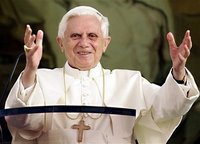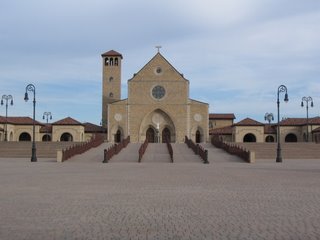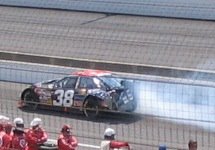From Adoremus:
Now, some priests and lay people think that Mass is never complete without dance. The difficulty is this: we come to Mass primarily to adore God -- what we call the vertical dimension. We do not come to Mass to entertain one another. That's not the purpose of Mass. The parish hall is for that.
So all those that want to entertain us -- after Mass, let us go to the parish hall and then you can dance. And then we clap. But when we come to Mass we don't come to clap. We don't come to watch people, to admire people. We want to adore God, to thank Him, to ask Him pardon for our sins, and to ask Him for what we need.
Don't misunderstand me, because when I said this at one place somebody said to me: "you are an African bishop. You Africans are always dancing. Why do you say we don't dance?"
A moment -- we Africans are not always dancing!
Moreover, there is a difference between those who come in procession at Offertory; they bring their gifts, with joy. There is a movement of the body right and left. They bring their gifts to God. That is good, really. And some of the choir, they sing. They have a little bit of movement. Nobody is going to condemn that. And when you are going out again, a little movement, it's all right.
But when you introduce wholesale, say, a ballerina, then I want to ask you what is it all about. What exactly are you arranging? When the people finish dancing in the Mass and then when the dance group finishes and people clap -- don't you see what it means? It means we have enjoyed it. We come for enjoyment. Repeat. So, there is something wrong. Whenever the people clap -- there is something wrong -- immediately. When they clap -- a dance is done and they clap.
It is possible that there could be a dance that is so exquisite that it raises people's minds to God, and they are praying and adoring God and when the dance is finished they are still wrapped up in prayer. But is that the type of dance you have seen? You see. It is not easy.
Most dances that are staged during Mass should have been done in the parish hall. And some of them are not even suitable for the parish hall.
I saw in one place -- I will not tell you where -- where they staged a dance during Mass, and that dance was offensive. It broke the rules of moral theology and modesty. Those who arranged it -- they should have had their heads washed with a bucket of holy water!
Why make the people of God suffer so much? Haven't we enough problems already? Only Sunday, one hour, they come to adore God. And you bring a dance! Are you so poor you have nothing else to bring us? Shame on you! That's how I feel about it.
Somebody can say, "but the pope visited this county and the people danced". A moment: Did the pope arrange it? Poor Holy Father -- he comes, the people arranged. He does not know what they arranged. And somebody introduces something funny -- is the pope responsible for that? Does that mean it is now approved? Did they put in on the table of the Congregation for Divine Worship? We would throw it out! If people want to dance, they know where to go.





